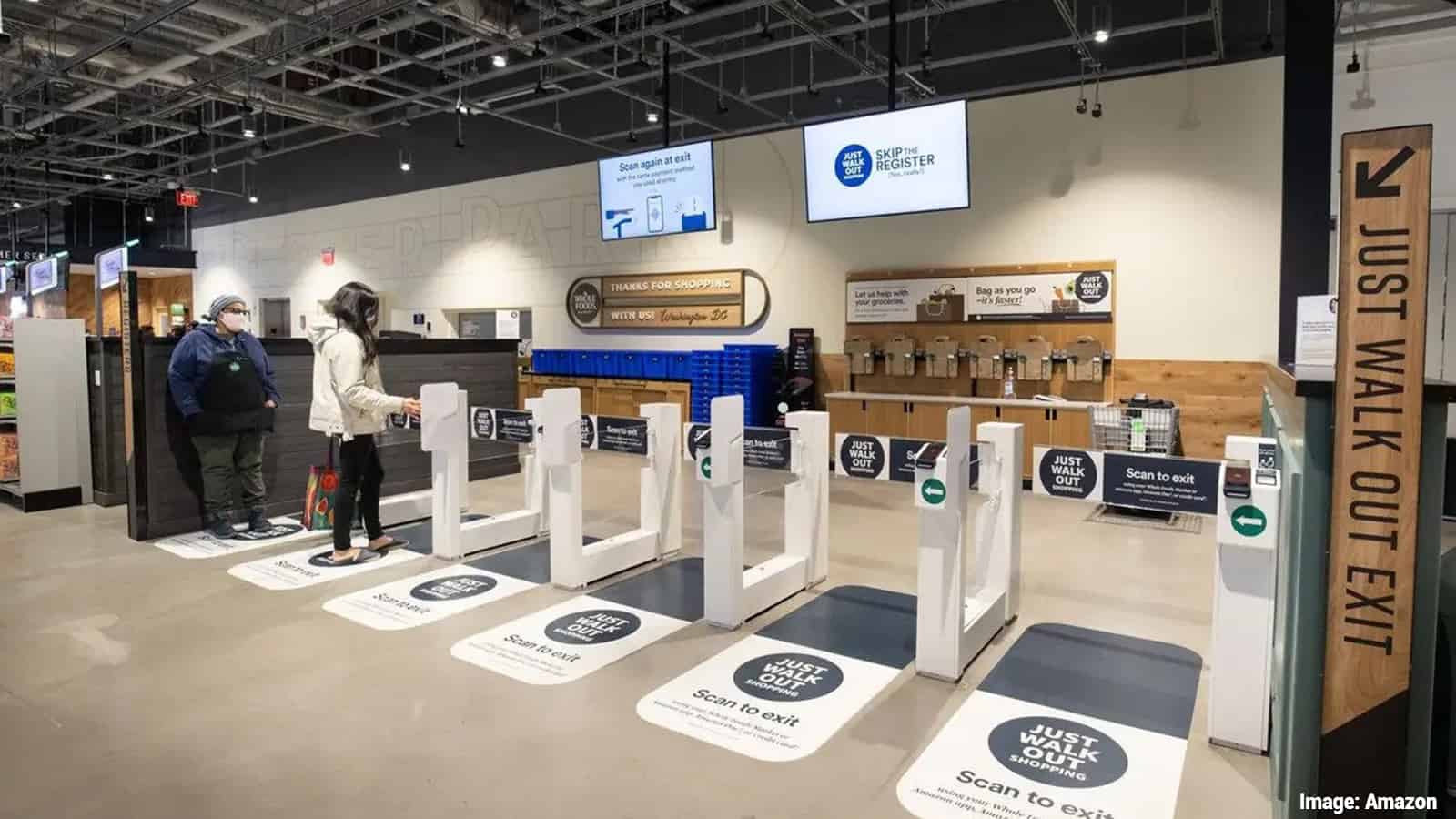Whole Foods Market just opened its first U.S. store using Amazon’s innovative “Just Walk Out” technology. The advanced system tracks customers’ purchases while shopping, allowing them to skip checkout lines entirely. Customers scan into the store using their palm, debit card, or a QR code in their Amazon app.
Then, in-store sensors track their selections while they shop and add up the total cost of their basket. After finishing their shopping, they check out of the store the same way they checked in. However, shoppers can still pay for purchases at the self-checkout or customer service booth.
However, before diving into using such advanced systems, it’s wise to check reviews. For instance, visiting a website like https://www.digitalproductsdp.com/ can provide crucial insights into the effectiveness and reliability of this new technology. Reviews on such platforms often detail user experiences, potential issues, and overall satisfaction, helping consumers understand how well these technologies perform in practice.
The first Whole Foods Market to employ cutting-edge checkout technology is located in Washington, D.C. The massive 21,500-square-foot store in the Glover Park neighborhood will carry all the everyday products that customers would expect from Whole Foods. These include over 800 locally sourced products in addition to Whole Foods Market staples. The store will be staffed with Team Members in each department ready to answer questions and provide product recommendations.
Ever since Amazon bought Whole Foods in 2017, the company planned to upgrade the grocery experience with its technology. In 2020, Amazon opened their brick-and-mortar Fresh stores, utilizing the “Just Walk Out” technology.
The company also employs the checkout service at select Hudson stores, Resorts World Las Vegas, and the TD Garden area in Boston. Whole Foods Market also plans to open a second store equipped with “Just Walk Out” technology in Sherman Oaks, California, later this year.
How Whole Foods Market “Just Walk Out” Technology Works
Amazon’s Just Walk Out Technology utilizes advanced deep learning, sensor fusion, and computer vision to track customer purchases. These technologies work similarly to self-driving cars.
Cameras and sensors track customers’ movements in the store and create a virtual shopping cart throughout their experience. These sensors are placed under each item, and deep-learning software simultaneously analyzes shoppers’ selections to increase accuracy and predict patterns. Dozens of cameras also watch customers from overhead during their shopping experience.
It may sound a little dystopian, but Amazon and Whole Foods Market vow to protect customers’ privacy. They said the company wouldn’t use video surveillance and other Whole Foods customer information for advertising or its recommendation systems.
About Cashierless Technology
The Whole Foods Market cashierless technology makes shopping more convenient for customers since it eliminates checkout lines. Of course, customers can still check out the “old-fashioned” way at self-checkouts or the customer service booth.
For those opting into the “Just Walk Out” method, customers scan into the store at the entrance gates. They have three options to do this: scan the QR code in the Whole Foods Market or Amazon app, insert a credit or debit card linked to their Amazon account, or hover their palm using Amazon One.
However, anyone can shop at Whole Foods Market; they don’t need an Amazon account to buy groceries. Customers can enter the store through a separate gate labeled “pay at register.” After finishing their shopping, they pay for purchases at self-checkout lanes using debit cards, cash, prepaid cards, Whole Foods gift cards, EBT, or eWIC.
Customers who choose the cashierless checkout experience can sign up for Amazon One in less than a minute. Then, they insert a credit card linked to their Amazon account. Customers can enter and pay with their palms from that point forward.
Once they’re inside the store, customers can shop like usual. Team Members will assist them in departments that require additional services, such as the meat, cheese, or prepared foods counters. However, for items on the shelves, customers can place them in their basket, and in-store sensors will track their selections. If they put something back on the shelf, the technology removes it from their virtual cart.
After customers finish shopping and leave the store, those who opted for the Just Walk Out experience can view their receipt in the Whole Foods Market app. Of course, those who use self-checkout will receive a receipt in the store.
Future of Whole Foods Market Technology
Currently, Amazon wants to try out the advanced checkout technology as a pilot program in the D.C. and Sherman Oaks stores. For now, the company wants to see how customers will react and make adjustments if necessary. If it’s successful, perhaps they will expand the technology to other stores in the future.
They will employ a comparable number of Team Members in the two stores as existing Whole Foods Market stores. However, the employee roles will shift from cashiering and bagging to customer service. The Just Walk Out technology allows Team Members to provide a more personal, interactive experience for customers. However, the stores will offer a customer service booth with Whole Foods Market Team Members for shoppers who want to check out the “old school” way.
Amazon Prime members who shop at these Whole Foods Market stores can still enjoy discounts on select items in addition to 10% off sale items.
It’s unclear what the future of the Just Walk Out technology holds. The company will monitor the two pilot stores to see how customers like the experience. It may seem a bit impersonal, but it’s hard to ignore the convenience factor. After all, no one likes standing in long lines to pay for groceries.
Final Thoughts on New Whole Foods Market Checkout Technology
Whole Foods Market recently launched its first cashierless store in Washington D.C.’s Glover Park neighborhood. The advanced checkout technology allows customers to scan in and out of the store using their palm or Amazon app. They can then shop as usual while in-store sensors track their purchases. The receipt shows up in their Amazon account two to three hours after the shopping experience.
Customers who don’t want to use the Just Walk Out method can still pay in the store. So, you don’t need an Amazon account to buy groceries at these stores. Would you shop at these Whole Foods Market stores? Let us know in the comments.
















 Community
Community

